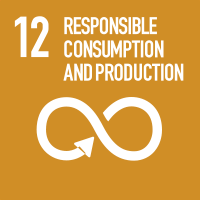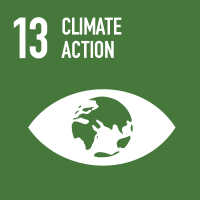Studying at the University of Verona
Here you can find information on the organisational aspects of the Programme, lecture timetables, learning activities and useful contact details for your time at the University, from enrolment to graduation.
Study Plan
This information is intended exclusively for students already enrolled in this course.If you are a new student interested in enrolling, you can find information about the course of study on the course page:
Laurea magistrale in Economics and data analysis - Enrollment from 2025/2026The Study Plan includes all modules, teaching and learning activities that each student will need to undertake during their time at the University.
Please select your Study Plan based on your enrollment year.
1° Year
| Modules | Credits | TAF | SSD |
|---|
One module between the following2° Year activated in the A.Y. 2024/2025
| Modules | Credits | TAF | SSD |
|---|
Two modules among the followingTwo modules among the followingOne module between the following| Modules | Credits | TAF | SSD |
|---|
One module between the following| Modules | Credits | TAF | SSD |
|---|
Two modules among the followingTwo modules among the followingOne module between the following| Modules | Credits | TAF | SSD |
|---|
Legend | Type of training activity (TTA)
TAF (Type of Educational Activity) All courses and activities are classified into different types of educational activities, indicated by a letter.
Environmental economics (2024/2025)
Teaching code
4S008980
Credits
6
Language
English
Scientific Disciplinary Sector (SSD)
SECS-P/02 - ECONOMIC POLICY
Courses Single
Authorized
The teaching is organized as follows:
PARTE 2
PARTE 1
Learning objectives
The course examines environmental problems from an economic perspective and the nature of environmental policies and environmental policy debates. Students will examine environmental policy instruments in response to environmental problems in theory and with real world examples. At the end of the course students should be able to assess strengths and weaknesses of alternative policy instruments and understand the basis for selecting among alternative instruments to resolve specific environmental problems. Students will gain the ability to apply economic principals to real-world environmental problems, to design environmental policy instruments and assess their effectiveness. Students will also gain soft skills by working in teams and presenting case studies.
Prerequisites and basic notions
Prospective students should be familiar with the concepts seen in the course of Microeconomics (Advanced) and are expected to be able to solve simple microeconomics models. Knowledge of public sector economics and statistical methods is appreciated but not mandatory.
Program
The course is organized in two parts. The first part of the course provides students with the theoretical foundations of environmental economics, starting from the fundamental concepts of welfare economics (Pareto optimality, welfare theorems, social welfare). The theory of public goods, externalities, and the solution given by the Coase theorem (property rights) are then addressed. This part concludes with the analysis of the intervention tools (Pigouvian taxes and subsidies). After these theoretical foundations, the topics of pollution control (accumulation of pollutants) and Cap and Trade programs (emission permits) are addressed.
The second part of the course deals with the valuation of goods - such as health and the environment - for which there is no market and, therefore, a reference price. The methods inspired by behavioural economics are first addressed: stated preferences (contingent valuation) and revealed preferences (hedonic prices). We then move on to the cost-benefit analysis (discounting, uncertainty, health valuation), and we conclude by dealing with the economics of natural resources (common goods, renewable and non-renewable resources).
Bibliography
Didactic methods
The course is primarily delivered through lectures. Students then present, in groups, academic articles that empirically apply the concepts introduced in class. A number of problem sets are also provided to support the students' independent work.
Learning assessment procedures
Students must take a closed-book final written exam, which assesses both their theoretical knowledge and their ability to critically apply it. This exam covers the topics seen in both parts of the course.
Evaluation criteria
Students are assessed on the basis of group presentations, the final written exam, and an individual research proposal based on one of the topics covered during the course. Non-attending students are instead evaluated on the research proposal and the final exam. For non-attending students, the final exam contains additional questions which test knowledge of the topics discussed in the group presentations.
Criteria for the composition of the final grade
The final grade is based on the final exam results. Students may then write and submit a research proposal based on the topics covered in class, the grade for which is worth 50% of the overall grade. Class presentations are optional and give up to 3 bonus points on the final grade.
Exam language
Inglese (English)



